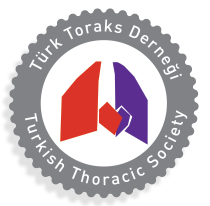Abstract
Abstract
This study is presented to evaluate the results of flexible fiberoptic bronchoscopy performed at our Department of Pediatric Allergy and Pulmonology Unit. Data of the 96 pediatric patients who had undergone flexible fiberoptic bronchoscopy in our clinic between January 2003 and February 2007 were evaluated retrospectively. Forty six patients (47.9%) were female and fifty patients (52.1%) were male. The mean age was 73.8±49.7 months, with a range of 2 and180 months. The most common indications for bronchoscopy were: persistent and/or recurrent pneumonia (24%), atelectasis (22%), suspected foreign bodies (10%), pulmonary tuberculosis (9%) tracheoesophageal fistula (5%), stridor (4%), and others (pulmonary hypoplasia, bronchial hypoplasia, gastroesophageal reflux, bronchiectasis, pulmonary hemosiderosis, hydatid cyst). Bronchoscopy findings of 19 (20%) patients were normal, while those of 77 (80%) patients produced findings which aided diagnosis and therapy. Moreover, rare pulmonary diseases such as tracheal bronchus in two cases and bronchial mucoepidermoid carcinoma in one case with recurrent pneumonia were encountered. Complications were pulmonary edema in one case, laryngospasm in two cases, bronchospasm in one case, and fever in three cases. In conclusion pediatric FFB is an advanced diagnostic tool with high diagnostic value and a low and insignificant complication rate in experienced hands and technically advanced settings.



